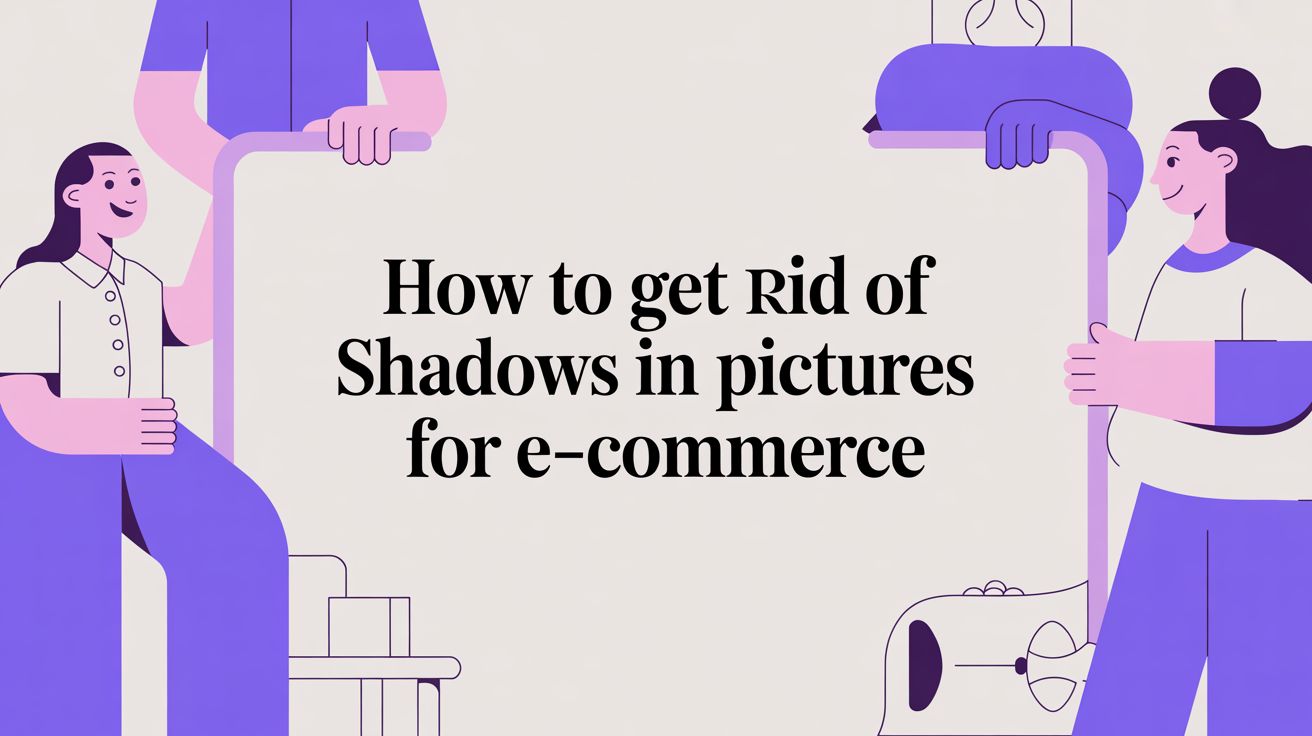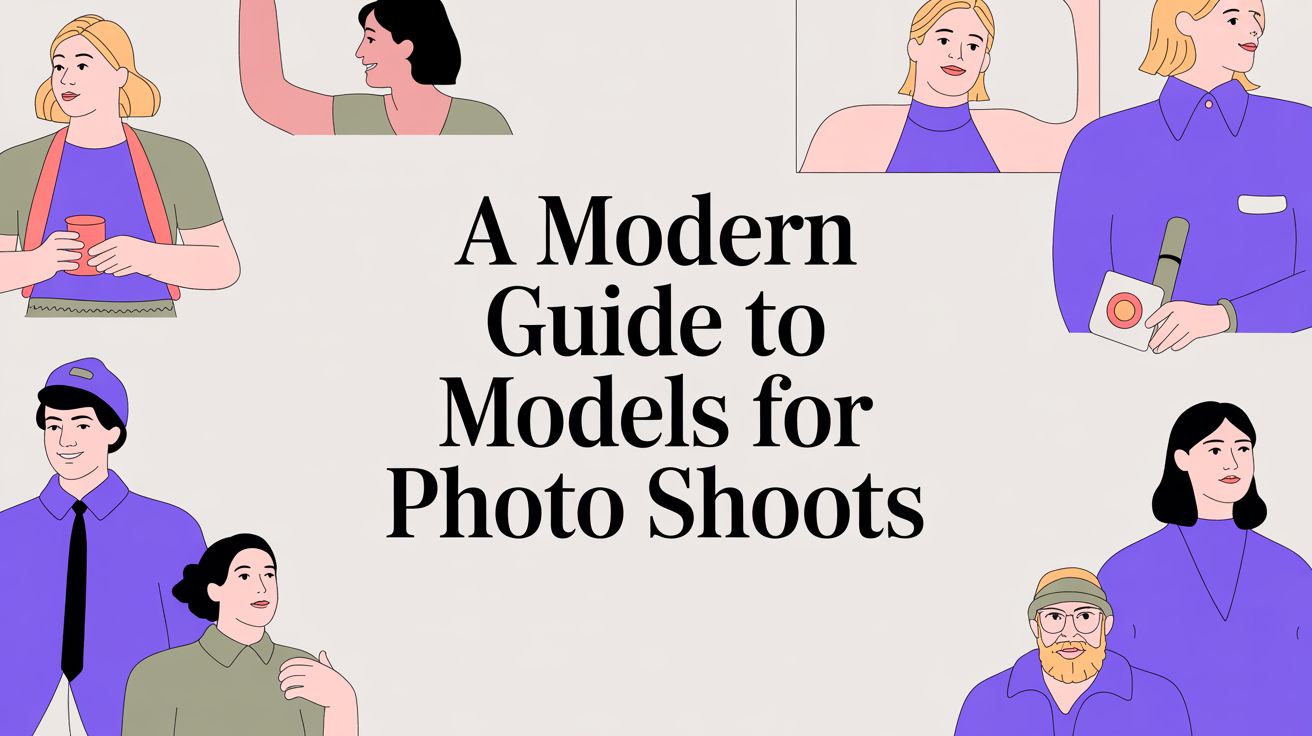Change Color of Background in Photo for Fashion Brands
Learn how to change color of background in photo using AI. Create stunning, on-brand product visuals for your fashion e-commerce store in minutes.
How to start saving money
Lorem ipsum dolor sit amet, consectetur adipiscing elit lobortis arcu enim urna adipiscing praesent velit viverra sit semper lorem eu cursus vel hendrerit elementum morbi curabitur etiam nibh justo, lorem aliquet donec sed sit mi dignissim at ante massa mattis.
- Neque sodales ut etiam sit amet nisl purus non tellus orci ac auctor
- Adipiscing elit ut aliquam purus sit amet viverra suspendisse potent i
- Mauris commodo quis imperdiet massa tincidunt nunc pulvinar
- Adipiscing elit ut aliquam purus sit amet viverra suspendisse potenti
Why it is important to start saving
Vitae congue eu consequat ac felis placerat vestibulum lectus mauris ultrices cursus sit amet dictum sit amet justo donec enim diam porttitor lacus luctus accumsan tortor posuere praesent tristique magna sit amet purus gravida quis blandit turpis.

How much money should I save?
At risus viverra adipiscing at in tellus integer feugiat nisl pretium fusce id velit ut tortor sagittis orci a scelerisque purus semper eget at lectus urna duis convallis. porta nibh venenatis cras sed felis eget neque laoreet suspendisse interdum consectetur libero id faucibus nisl donec pretium vulputate sapien nec sagittis aliquam nunc lobortis mattis aliquam faucibus purus in.
- Neque sodales ut etiam sit amet nisl purus non tellus orci ac auctor dolor sit amet
- Adipiscing elit ut aliquam purus sit amet viverra suspendisse potenti
- Mauris commodo quis imperdiet massa tincidunt nunc pulvinar
- Adipiscing elit ut aliquam purus sit amet viverra suspendisse potenti
What percentage of my income should go to savings?
Nisi quis eleifend quam adipiscing vitae aliquet bibendum enim facilisis gravida neque. Velit euismod in pellentesque massa placerat volutpat lacus laoreet non curabitur gravida odio aenean sed adipiscing diam donec adipiscing tristique risus. amet est placerat imperdiet sed euismod nisi.
“Nisi quis eleifend quam adipiscing vitae aliquet bibendum enim facilisis gravida neque velit euismod in pellentesque massa placerat”
Do you have any comments? Share them with us on social media
Urna ut fermentum imperdiet lacus, elementum etiam maecenas libero nunc, suspendisse massa, nisl, elit curabitur feugiat in quis ut nibh enim in tristique aliquam sed vitae dui, dis adipiscing pharetra aliquam turpis turpis nibh rhoncus enim, pellentesque leo laoreet neque in sed bibendum fermentum suspendisse tempus non purus adipiscing suscipit fringilla adipiscing convallis dolor nulla fermentum facilisis ullamcorper ut vehicula tortor libero metus donec velit, tristique fermentum, dictum euismod diam scelerisque enim non pharetra tristique lectus habitant pharetra est id
When fashion brand Crocs tested AI-generated photos for their spring collection, they discovered a 60% faster campaign rollout. The secret wasn't a bigger team — it was the ability to instantly change the color of the background in a photo with AI.
This removes the need for expensive reshoots, allowing brands to test dozens of visual concepts in minutes, not weeks. The savings in time and cost are transforming how brands create content.
Walk through a brand like Everlane's online store, and you'll notice the consistent, on-brand background colors. This is a strategic play to build a premium identity.
AI platforms like Picjam make this level of visual polish accessible, letting brands streamline content production while elevating their aesthetic.
How AI Slashes Content Costs for E-Commerce Visuals
According to McKinsey, AI can boost productivity in marketing functions by up to 15%. For fashion brands, this efficiency translates directly into lower content creation costs.
The traditional workflow — photoshoot, manual retouching, revisions — is a significant budget item. Swapping to an AI-driven process cuts this down dramatically.
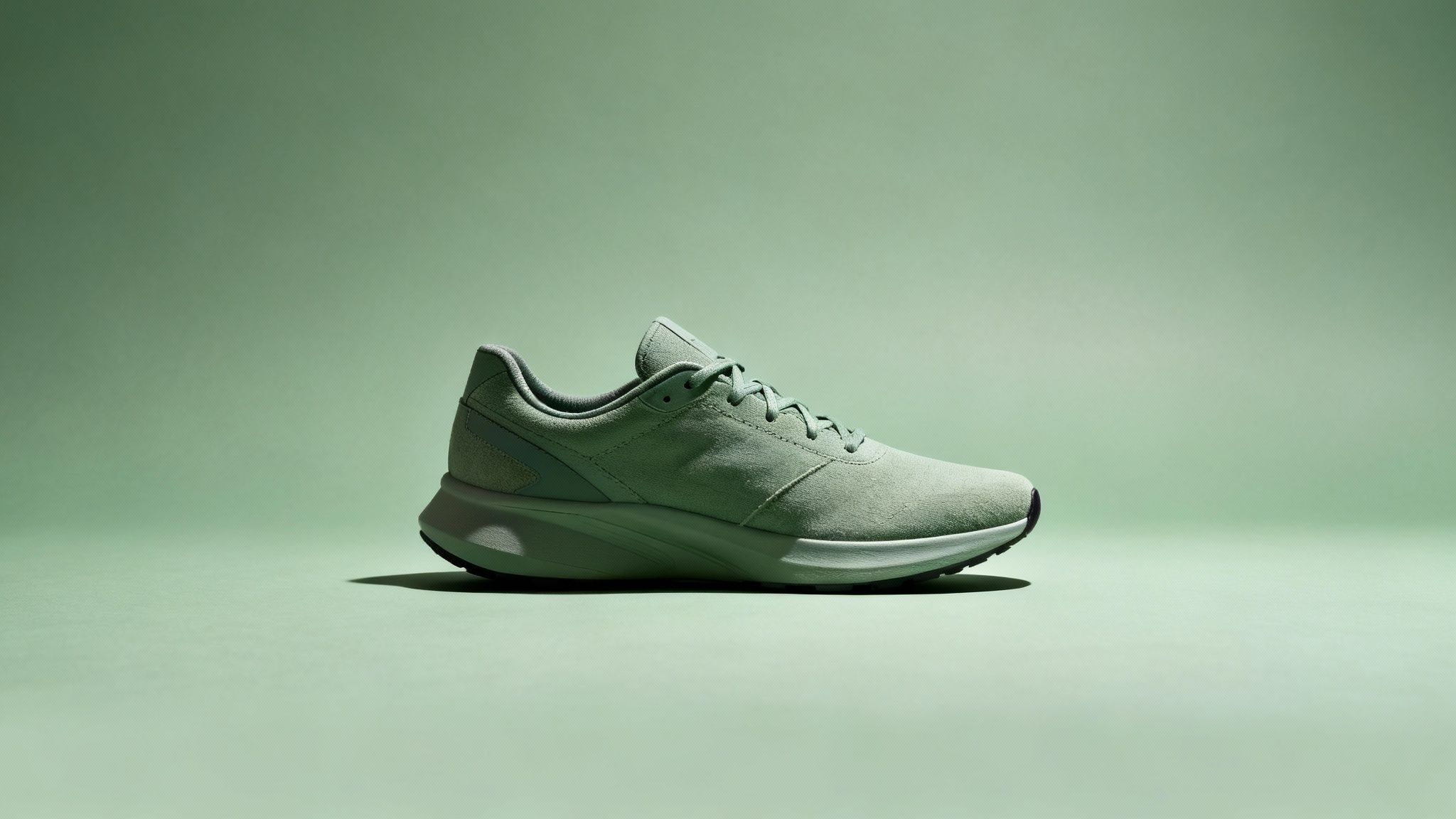
Why an AI Workflow Is the New Standard
When you use AI to change the color of the background in a photo, you’re doing more than just editing an image. You’re unlocking a more agile and cost-effective way to create campaigns.
Imagine testing a dozen background colors for a new sneaker drop. This task, once a multi-day effort for a design team, now takes minutes.
This workflow, especially using platforms like Picjam, delivers huge savings. We cover how this tech is reshaping the industry in our guide to AI product photography.
The market reflects this shift. Valued at $449.2 million in 2023, the photo editing software market is projected to hit $886.2 million by 2032, driven by e-commerce brands needing more dynamic content.
A Strategic Advantage for Modern Brands
The power to instantly change backgrounds provides a real competitive edge. Your marketing team can create more content, A/B test visuals, and react to market trends without booking another photoshoot.
By separating the product from its background, brands unlock endless creative possibilities. A single product shot can be repurposed for a website catalog, a vibrant social media ad, or a minimalist email campaign, all without additional photography investment. This flexibility is key to building a modern, agile fashion brand.
From Hours of Manual Masking to AI Precision
Not long ago, if you wanted to change the color of the background in a photo, you were in for hours of painstaking work. Think of a global brand like Zara — they would have entire teams of retouchers creating pixel-perfect clipping paths in Photoshop.
Each image was a battle of meticulous masking to separate a garment from its background without losing details like flyaway threads or soft shadows.
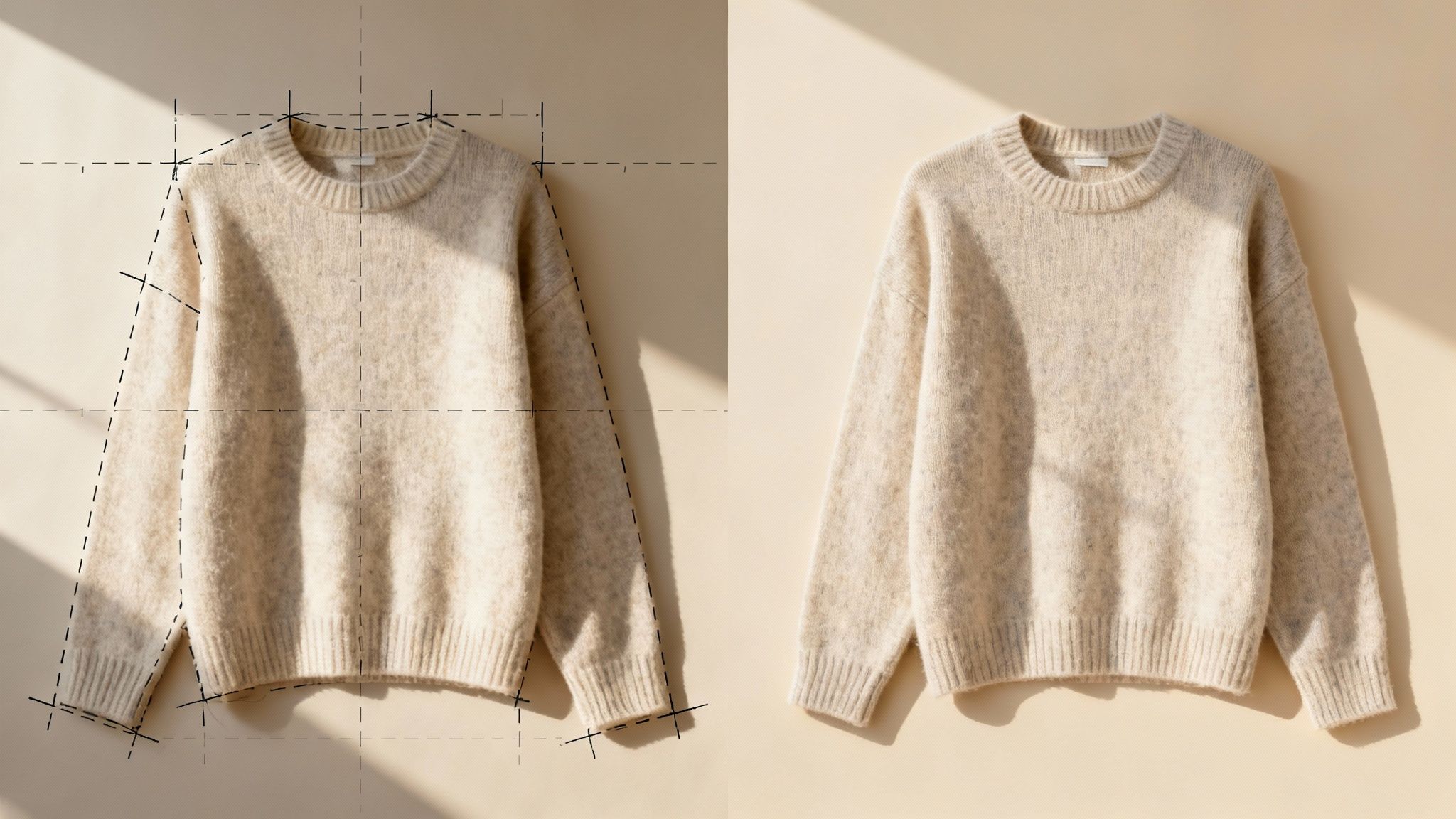
For decades, this was the industry standard. Even after Adobe Photoshop launched in 1990, the core job remained labor-intensive. It wasn't until the late 2010s that AI tools began turning this multi-hour headache into a task completed in seconds.
The New Creative Workflow
Today, that entire process has been streamlined. A single marketer using a platform like Picjam can get pixel-perfect results instantly.
This isn't just a win for speed; it's about reallocating resources. The budget once spent on tedious retouching can now fuel creative strategy or ad spend.
This leap from manual editing to AI-powered creation has leveled the playing field. Emerging brands can now compete with established giants on visual quality without a massive production budget.
Beyond Backgrounds: A Broader Impact
This efficiency boost extends beyond swapping backgrounds. It’s changing how fashion brands create advertising content, a trend explored in guides on AI-driven creative automation for ads.
This new approach makes brands more agile. Refreshing product shots for a last-minute sale is no longer a logistical nightmare. You can generate a whole new set of visuals in minutes.
This transition is more than a tech upgrade. It’s a strategic pivot that lets fashion brands operate with more speed, creativity, and financial smarts, turning visual production from a cost center into a real driver of growth.
Choosing Background Colors That Actually Convert
When you change the color of the background in a photo, you’re influencing how customers perceive your products. It's a critical part of the visual conversation.
Look at how a brand like Glossier uses a soft palette to reinforce its "skin first, makeup second" philosophy.
Conversely, Nike often deploys bold, high-energy colors, creating a sense of power that matches the product's use. Neither approach is accidental; both are strategic.
A Framework for Color Selection
The right background creates a mood and makes the garment the star. A delicate silk blouse would be overpowered by a loud color, but against a deep jewel tone, it looks luxurious.
How do you find the right color?
- Does it match your brand? A playful, Gen Z-focused brand might use vibrant pastels, while a heritage brand will stick to timeless neutrals.
- Does it make the product pop? You want the background to complement the garment, not compete. A color wheel can help find shades that create contrast without clashing.
- What’s the goal of the campaign? For a seasonal line, tie the color to the time of year. A warm terracotta is perfect for an autumn collection.
This thinking is why a flexible product photography backdrop strategy is so important. Background color carries psychological weight that can influence a shopper's mood.
Background Color Impact on Fashion E-Commerce
Using this table can help you make intentional decisions that resonate with your target audience and drive better results.
Responding to Consumer Color Trends
Shoppers are more visually savvy than ever. Recent surveys show that 36% of consumers expect brand imagery to feature vivid, saturated colors — a big shift from the muted tones of a few years ago.
Even more telling, 50% of shoppers admit to choosing one brand over another based on color alone. You can dive deeper into these evolving tastes by exploring the full 2025 photography trend report.
A critical piece is ensuring the garment’s color stays true. Color accuracy builds trust and keeps return rates down. An AI tool that perfectly isolates the product is a lifesaver.
A brand launching a new collection can use Picjam to test one sweater against five background colors. They run small, targeted social media A/B tests to see which color combo gets the best click-through rate. The winner becomes the standard for the entire collection.
How to Change Background Color with AI
Here's how you can change the color of the background in a photo using a platform like Picjam. This process turns a technical job into a simple, creative task for any marketer.
A great final image starts with a quality source file. Begin with product shots that have clean, consistent lighting. Feeding the AI a well-lit image ensures it captures the garment’s true texture and shape.
From Upload to Final Image
Once your photos are ready, the workflow is simple. You can upload a single shot or an entire collection. The AI first removes the background instantly and precisely.
From there, you can apply new background colors from a palette or by entering a specific hex code. This is how a brand like Everlane maintains its signature muted aesthetic across every product listing.
Preserving Realism and Detail
One common giveaway of a background swap is losing the natural shadows that ground a product in its scene. Without them, items can look cheap and "cut-out."
Picjam's AI is trained to recognize and preserve these crucial details. It keeps the subtle shadows cast by the garment, ensuring the final image looks like it was shot in a professional studio.
If you're interested in the tech behind this visual automation, you can learn more about dynamic API pictures.
This flow chart breaks down a simple process for choosing colors that don’t just look good, but perform.
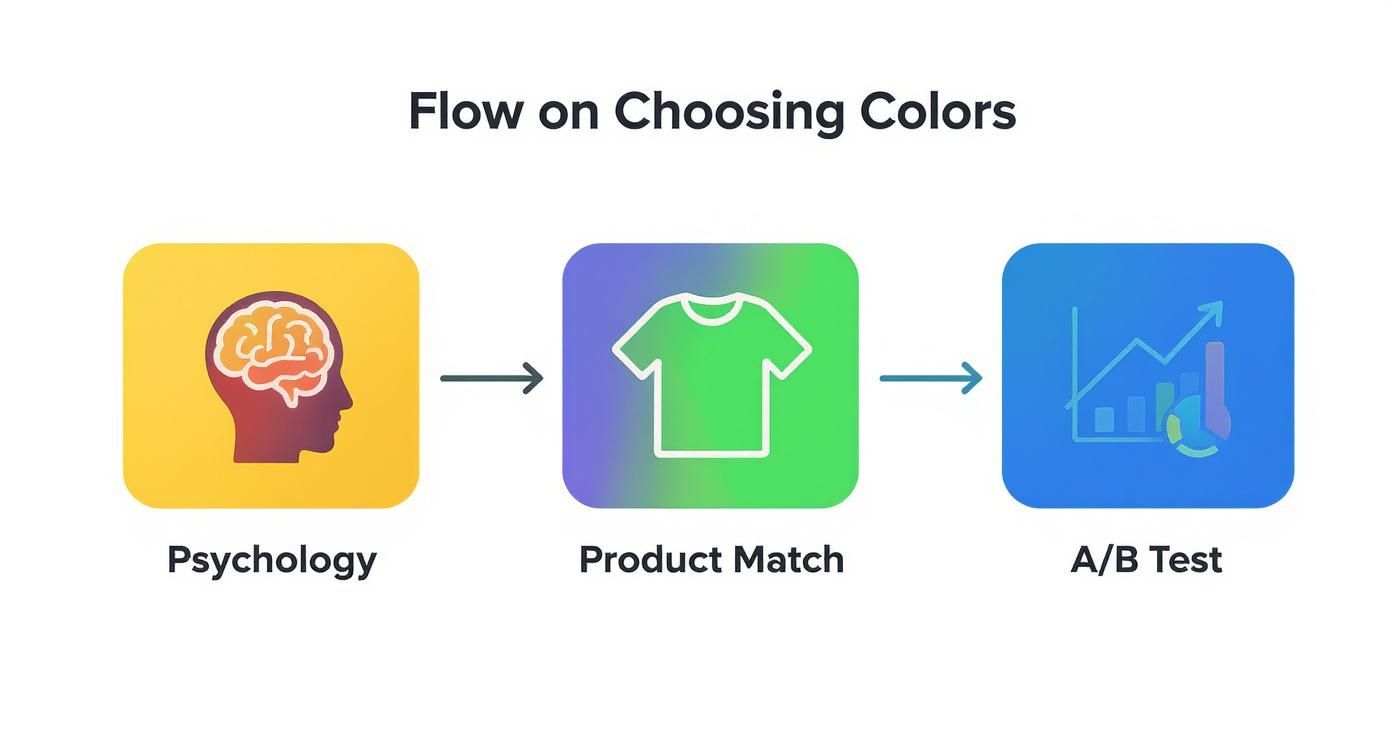
Moving from color psychology to split-testing gives you a roadmap for making creative decisions backed by data.
Achieving Scale with Batch Processing
The real game-changer is batch processing. Instead of editing photos one by one, you can apply a single background color to an entire collection at once.
Imagine creating a gallery for a new handbag line in 10 different background colors for a social media push — a job that now takes seconds, not hours.
This lets brands build massive visual libraries from a small set of photos, saving thousands in photography costs.
Maintaining Visual Consistency Across Channels
A powerful background color strategy only works if it’s consistent. When you change the color of the background in a photo, you're making a brand statement that needs to feel the same everywhere.
This is where a clear brand style guide becomes essential.
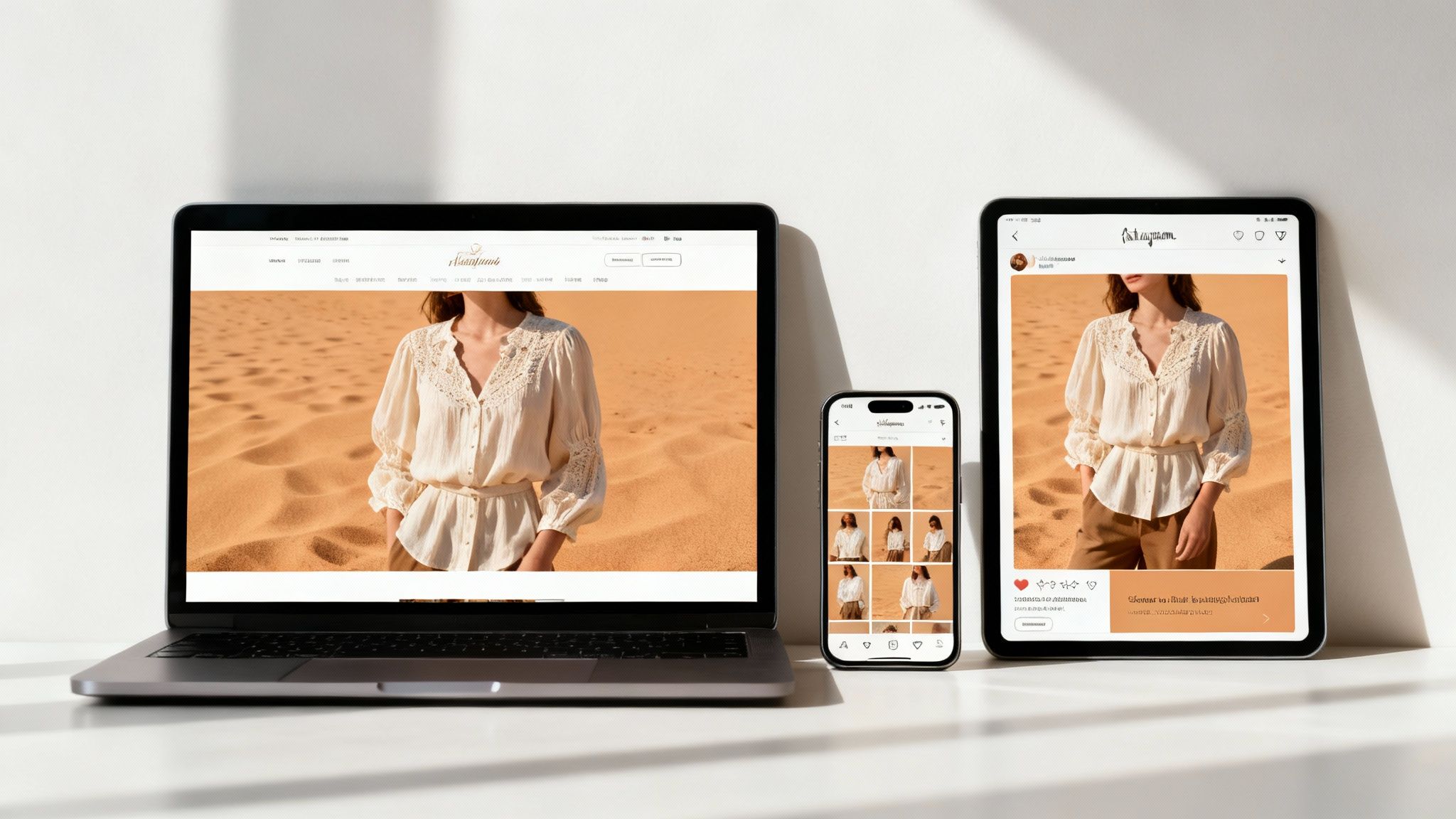
This guide can be a simple resource listing your approved background hex codes. Having these codes locked in prevents visual drift and ensures every image feels like it belongs.
Channel-Specific Strategies
Consistency doesn't mean rigidity. Smart brands adapt their core visual identity for different channels.
- Website Product Pages: These demand the most consistency. A unified background color creates a clean, shoppable experience.
- Instagram Grid: You have more creative freedom. Introduce complementary colors or subtle gradients for a visually interesting effect.
- Paid Social Ads: This is your testing ground. Use a bolder, eye-catching background color from your brand’s palette to stop the scroll.
Take a brand like Reformation. They might use earthy, neutral tones (#F5F0EB, #D3C5BC) for their main collection pages. But for a holiday campaign, they could switch to a vibrant emerald green (#0A5442).
The Savings of Agile Content Creation
This level of agile content creation used to be impossibly expensive. It would mean commissioning multiple versions of every shot or bogging down designers with endless requests.
AI tools like Picjam eliminate this friction. A marketing manager can generate a dozen variations of a product shot for different channels in minutes. This agility ensures your brand feels unified — without inflating your production budget. It’s a direct saving that also elevates your brand’s cohesion.
Takeaway
Here are the key actionable insights for your brand when you change the color of the background in a photo.
- Treat AI as a cost-saving tool. Use it to reduce your photography budget and launch campaigns faster. The ability to A/B test visuals quickly is a significant financial advantage, allowing you to pivot creative direction without new photoshoots.
- Be strategic with your color palette. Move beyond plain white backgrounds. Test shades that complement your products and align with your brand identity. A cohesive color story strengthens brand recognition and elevates perceived value.
- Use batch processing for consistency. To build a recognizable brand, every image needs to feel cohesive. Batch workflows enable you to achieve this at scale, saving time while creating a unified, professional look across all channels.
Ready to see how much you could save? Use the Picjam savings calculator to compare our AI platform with your current photography costs.
Picjam team
Pellentesque leo laoreet neque in sed bibendum fermentum suspendisse tempus non purus adipiscing suscipit fringilla adipiscing convallis dolor nulla fermentum facilisis ullamcorper ut vehicula tortor lib.


